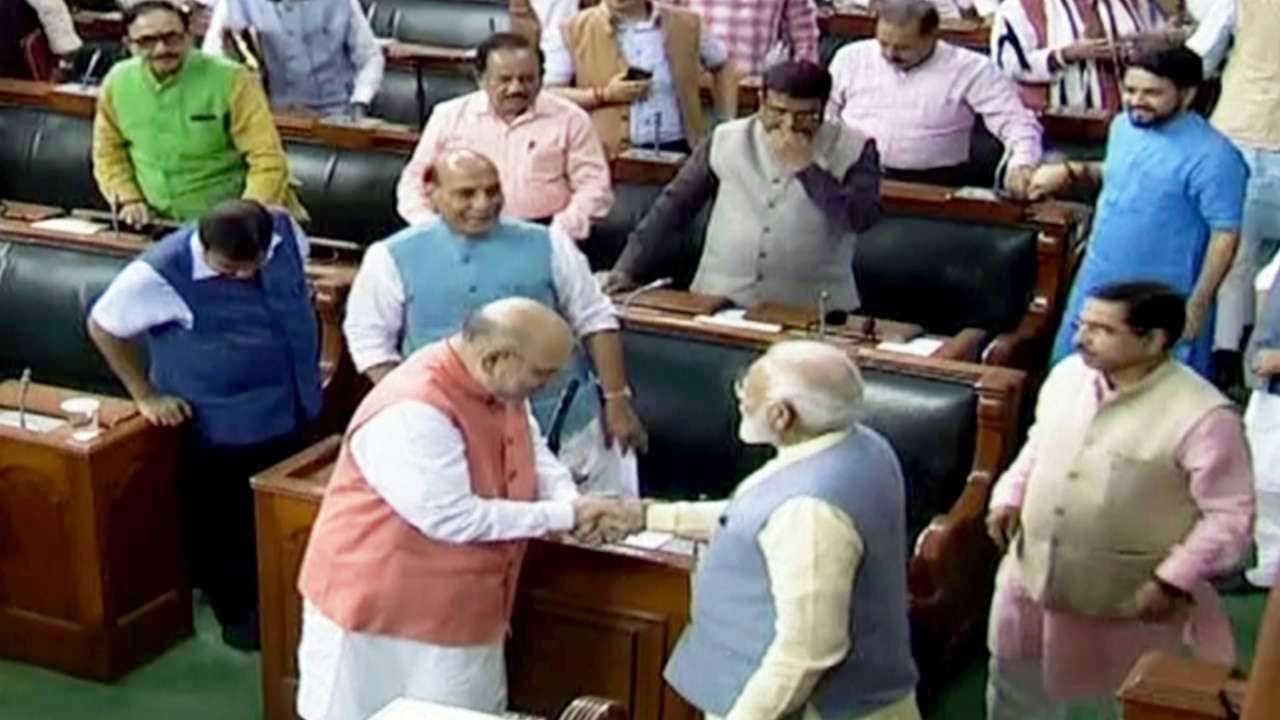Khalid Bashir Gura reviews Anuradha Bhasin’s book that chronicles the Kashmir happenings after the reading down of Article 370 and 35A in August 2019

On August 5, 2019, the parliament stripped Jammu and Kashmir of its special status by reading down Articles 370 and 35 and divided the erstwhile state into two federally governed union territories. It was supposed to usher Jammu and Kashmir into a new Naya Kashmir envisaging democracy, peace, equality, development and the end of suffering.
How the decision-making was seen and implemented on the ground is the story that makes Anuradha Bhasin’s, A Dismantled State: The Untold Story of Kashmir After Article 370, a book that Harper Collins published last year.
In her book, Bhasin, a journalist, a John S Knight Fellow at Stanford University, traverses the transition journey, a change that left people in deep distress, dilemma, disempowered and dispossessed.
Pre August 5, 2019
The book details the elaborate preparations in anticipation, envisaging converting Kashmir into a “giant prison” with people trapped inside like “mice in mousetraps”. With all forms of communication frozen, the author saw it as a physical, psychological, economic, and political siege. The book questions the means and methods employed by a democratic nation to deliver the deed.
In anticipation, the book suggests a slew of events and narratives were launched in a year-long political vacuum in which panic was induced by rumours and orders. The local politicians were kept in dark and caged and treated like commoners before the bill moved in Lok Sabha.
Post August 5, 2019
On the ground, however, the move enforced new laws and policies triggering fears of dispossession, disempowerment and ecological vandalism. Amidst the communication clampdown, the author narrates her journey to Supreme Court seeking revocation of the ban on high-speed internet that lasted more than 550 days. A journalist, she explains the net difference between blackouts and operating from information blackouts. She questions the piecemeal restoration of the internet which was out of sync with guiding principles laid down by the top Court. She chronicles the struggle people had in the absence of communication and questions the digital India narrative as Kashmir continued to be on the wrong side of it. The security lockdown paved way for Covid19 lockdown.
As prisons were filled to the brim and uncertainty hovered, the author has given a peep into the struggle of people across ideologies, parties and classes to reveal how the imprisoned were made to sign a bond to walk out on a promise of good behaviour. She also chronicled the struggle of commoners to have an access to jails and the financial exhaustion of the families in locating and meeting their members. As the poor remained in jail, the books say the influential were released to salvage the international image. In this process, the Public Safety Act (PSA), and Unlawful Activities Prevention Act (UAPA) were weaponized and used arbitrarily against people to shut dissent.
The book traces the use of harassment, intimidation, detention, humiliation, raids, molestations and psychological traumatisation to prevent a law and order situation. The institutionalisation of fear, she believes made protest impossible.
Lockdown Continuity
As Kashmir seamlessly witnessed a transition from a security lockdown to the one triggered by the pandemic, the book said the latter evoked sympathy in mainland India for Kashmir. The book critiques the comparisons as refers to how it was used as a pretext to enforce new laws and disallow any dissent.
The book flags the role of Delhi TV in amplifying the questionable narrative peddled by the government and giving a spin to suit its agendas. The author asserts that the media had to die to help ‘normalcy’ survive.

Politics
Politics remained in the deep freeze. As imprisoned politicians signed bonds in return for freedom, she traced Kashmir’s political journey from the plebiscite days to the demand for statehood. The book details the spread of new political offshoots to help BJP to make strong inroads. It refers to the events suggesting BJP gerrymandering through delimitations, the DDC elections and how it was played to fracture PAGD. The book has not traced the separatist voice and argues that its political sphere has irrevocably slipped into a black hole.
The author argues that earlier Delhi viewed and retained Kashmir for some strategic and symbolic values, a thought process that BJP changed. The change, she adds is implemented by bulldozing economy, polity, society and demography to fulfil certain agendas.
The book suggests that the new land laws and property rights introduced in Kashmir are inherently disempowering and dispossessing the population. As tinkering with land laws has induced anxieties, it has brought back demographic change worries. The author flags the skewed balance in bureaucracy tilted towards a particular ideology and religion.
The author believes the people have not been integrated but alienated further from the country and resultant the silence and seething anger could be a lull before the storm.
The Book
The book may not appeal to the people living in Jammu and Kashmir because they have lived experiences but it offers the ground side to the non-natives who have Delhi TV as the main source of information. The book has scrolled and reviewed local, national and international reportage to counter the official narrative. The book is an insightful coverage that explains Yevgeny Yevtushenko’s saying: “When the truth is replaced by silence, the silence is a lie.”
from Kashmir Life https://ift.tt/1dKge25
via IFTTThttps://kashmirlife.net
No comments:
Post a Comment